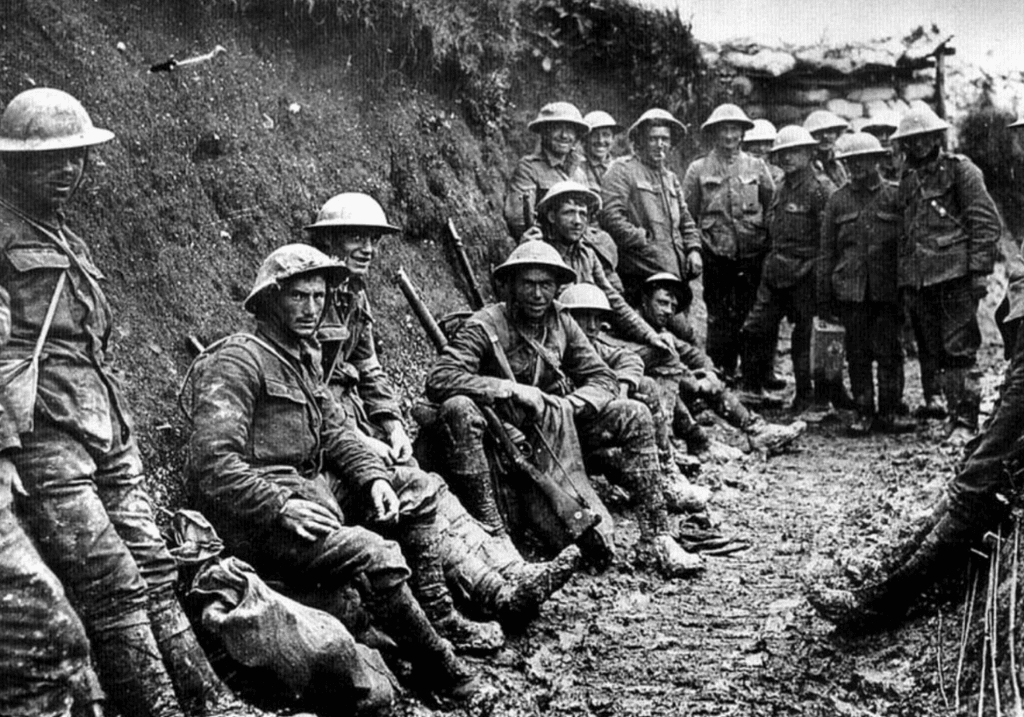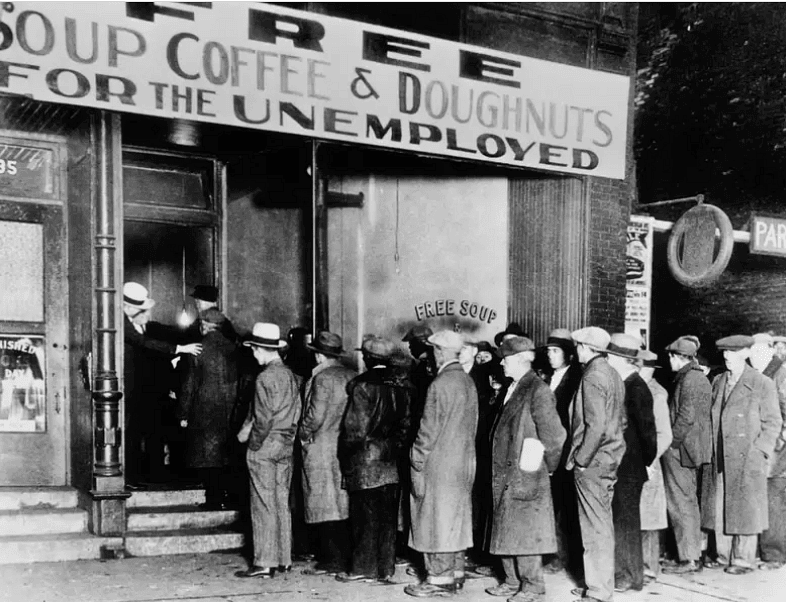Class 10 History Chapter 3 Extra Question Answers - The Making of Global World
Short Answer Questions
Q1. Explain the three types of flows within the international economic exchanges during 1815-1914.
OR
Mention the three types of movements of flows within the international economic exchange in the 19th century.
Ans: Three Types of Flows in International Economic Exchanges (1815-1914)
Trade Flow: This involves the exchange of goods, such as cloth and wheat. After Britain abolished the Corn Laws, it started importing food, which led to increased agricultural productivity in Eastern Europe, Russia, and America to satisfy British demands. This shift spurred industrial growth in Britain and expansion in global agriculture, requiring both capital and labour for new settlements.
Labour Flow: The demand for labour in regions like America and Australia resulted in significant migration. Nearly 50 million Europeans moved to these areas during the 19th century, with an estimated 150 million people crossing oceans in search of better opportunities.
Capital Flow: This refers to the movement of capital for both short-term and long-term investments. By 1890, a global agricultural economy had emerged, leading to complex changes in labour patterns and investment strategies.
Q2. Define the term ‘trade surplus’. How was the income received from the trade surplus with India used by Britain? OR What is meant by, ‘Trade Surplus’? Why did Britain have a trade surplus with India?
OR
How did Britain’s trade surplus from India help her to balance its trade deficits?
Ans: Trade surplus refers to a situation where a country's exports exceed its imports. In the 19th century, British manufacturers significantly entered the Indian market, leading to an increase in food grain and raw material exports from India to Britain. However, the value of British exports to India was much higher than the imports from India, resulting in a trade surplus for Britain.
This trade surplus allowed Britain to balance its trade deficits with other countries, where it was importing more than it was selling.
Additionally, the surplus contributed to covering the so-called home charges, which included:
- Private remittances sent back by British officials and traders.
- Interest payments on India's external debt.
- Pensions for British officials in India.
Q3. How did the First World War change the economic life of the people in Britain? Explain.
 World War I
World War I
Ans: Impact of World War I on Britain:
- Industries were restructured for war production.
- Societies were reorganised to support wartime efforts.
- Women took on jobs traditionally held by men during the war.
Post-War Economic Challenges:
- Britain faced a difficult economic recovery after the war.
- An initial boom from increased demand and production led to post-war difficulties.
- The end of the war boom resulted in decreased production and rising unemployment.
Unemployment and Economic Struggles:
- By 1921, one in every five British workers was unemployed.
- This economic downturn caused widespread anxiety and uncertainty.
Agricultural Crisis:
- Many agricultural economies faced a crisis.
- During the war, Canada, America, and Australia became major wheat suppliers, leading to a decline in European production.
- The resulting surplus caused grain prices to fall, reducing rural incomes and increasing farmer debt.
Q4. Explain the two factors responsible for the Great Depression in the world in 1929.
Ans: A worldwide economic crisis, known as the Great Depression, began in 1929 and lasted until 1934, starting in the USA and affecting many countries, except Russia.
Overproduction in Industry:
During the First World War (1914-1918), American industry thrived, leading to increased production even after the war. This resulted in a market glut, where:
- Exports fell significantly.
- The domestic market could not absorb the excess products.
- This caused a severe decline in production, employment, and trade.
- Factories closed, leading to widespread unemployment.
Agricultural Crisis:The agricultural sector suffered greatly post-war. The USA had been a major wheat supplier, but:
- Eastern European countries resumed wheat production.
- This led to a steep decline in prices.
- Farm produce often went unsold, resulting in waste.
Q5. What is Group 77? Why did Group 77 countries demand a New International Economic Order? Explain.
OR
Explain what is referred to as the G-77. In what ways can G-77 be seen as a reaction to the activities of the Bretton Woods twins?
Ans: The Group of 77 (G-77) is a coalition of developing countries formed to promote their collective economic interests. It emerged as a response to the influence of the Bretton Woods institutions, namely the IMF and the World Bank, which were seen as favouring wealthy nations.
- The IMF and the World Bank aimed to assist in the reconstruction of post-war nations.
- However, these institutions often allowed large corporations from powerful countries, like the USA, to exploit the resources of weaker nations.
- During the 1950s and 1960s, while Western economies thrived, many developing countries did not see similar benefits.
- In reaction, the G-77 was formed to demand a New International Economic Order (NIEO).
The NIEO sought:
- Real control over natural resources.
- Increased development assistance.
- Fairer prices for raw materials.
- Better access to markets for manufactured goods.
Q6. Give two examples from history to show the impact of technology on food availability. OR Explain with examples how technology helped in solving problems of food availability throughout the world in the 19th century.
Ans: The nineteenth century saw significant advancements in technology that greatly affected food availability. Here are two key examples:
- Railways: The growth of railways connected agricultural areas to ports. This made it easier and cheaper to transport food from farms to markets, increasing overall food availability.
- Refrigerated Ships: Before the invention of refrigerated ships, live animals were transported from America to Europe, which was costly and risky. Many animals died during the journey. With refrigeration, animals could be slaughtered at their origin and shipped as frozen meat, reducing costs and making meat more accessible to the European poor.
These technological improvements not only enhanced food distribution but also contributed to a more varied diet for many, moving beyond just bread and potatoes.
Q7. Describe briefly the effects of Rinderpest in Africa in the 1980s.
Ans: The effects of Rinderpest in Africa during the 1980s were significant:
- The disease led to the loss of a large number of cattle, severely impacting local livelihoods.
- With fewer cattle available, planters, mine owners, and colonial governments gained control over the remaining resources.
- This control allowed them to strengthen their power and compel Africans into the labour market.
- Ultimately, the scarcity of cattle facilitated European colonisers in their efforts to conquer and subdue Africa.
Q8. How was the food problem solved in Britain after the scrapping of the Corn Laws? Explain.
Ans: The abolition of the Corn Laws in Britain led to significant changes in the food supply and agricultural landscape:
- The decision allowed for the import of cheaper crops from the Americas and Australia.
- Many English farmers left their farms, moving to cities or migrating overseas.
- This shift contributed to rapid urbanisation and the growth of global agriculture.
- As food prices fell, consumption in Britain increased.
- Higher industrial growth in the mid-nineteenth century resulted in greater demand for food imports.
- Countries worldwide expanded their agricultural production to meet British demand.
Q9. Explain how the First World War was so horrible a war like none other before. OR Explain the effect of the death of men of working age in Europe because of the First World War.
Ans: The First World War was a conflict unlike any before it, marked by unprecedented levels of destruction and loss. Key features included:
- The involvement of major industrial nations that utilised modern technology to maximise destruction.
- Widespread use of machine guns, tanks, aircraft, and chemical weapons on a massive scale.
- Recruitment of millions of soldiers from around the world, transported to the frontlines via large ships and trains.
The scale of death was staggering:
- Approximately 9 million soldiers died and around 20 million were injured.
- Most casualties were men of working age, significantly reducing the able-bodied workforce in Europe.
- Household incomes declined as families lost their primary earners.
During the war, societies were transformed:
- Industries shifted to produce war-related goods.
- Women took on roles traditionally held by men, filling gaps in the workforce.
Q10. What were the main reasons for the attraction of Europeans to Africa?
Ans: The main reasons for the attraction of Europeans to Africa included:
- Vast resources: Africa was rich in land and minerals.
- Economic opportunities: Europeans aimed to establish plantations and mines for exporting crops and minerals to Europe.
- Colonial expansion: Europeans sought to conquer and divide Africa among themselves, establishing colonial powers.
Q11. What was the impact of technology on food availability? Explain with the help of examples.
Ans: Technological advances significantly improved food availability by enhancing transportation methods. Key developments included:
- Faster railways and larger ships allowed for quicker and cheaper movement of food from distant farms to markets.
- Refrigerated ships revolutionised the meat trade, enabling frozen meat to be transported from America and Australia to Europe.
- This innovation reduced meat prices, making it accessible to the poorer population in Europe, who could now enjoy a more varied diet.
Overall, these advancements promoted better living conditions and increased social stability.
Q12. Explain the effects of the British government’s decision to abolish the Corn Laws.
 Abolition of Corn Laws
Abolition of Corn Laws
Ans: The abolition of the Corn Laws in Britain had significant effects:
- Food could be imported more cheaply, leading to lower prices for consumers.
- British agriculture struggled to compete with these cheap imports.
- Many farms were left uncultivated, resulting in widespread unemployment.
- Thousands of people migrated to cities or sought opportunities abroad.
Q13. Give three examples to show that the world changed with the discovery of new sea routes to America.
Ans: The discovery of new sea routes to America significantly changed the world in several ways:
- Attraction of Europeans: The vast lands and rich resources of America drew many Europeans, eager to explore and settle.
- Wealth from Precious Metals: The conquest of America by the Portuguese and Spanish led to the extraction of silver and gold, greatly increasing European wealth.
- Migration and Trade: Many fleeing religious conflicts in Europe sought refuge in America, while the demand for labour led to the importation of slaves from Africa to cultivate crops for European markets.
Q14. Why did European employers find it difficult to recruit labor in Africa? Give two methods they used to recruit and retain labor.
Ans: European employers faced challenges in recruiting labour in Africa due to several factors:
- Africa had abundant land and a relatively small population, leading to a culture where people rarely sought paid work.
To attract and retain workers, European employers employed the following methods:
- They imposed heavy taxes that could only be paid by working for wages on plantations and in mines.
- They altered inheritance laws to displace peasants from their land, allowing only one family member to inherit, which forced others into the labour market.
Q15. What was the Corn Law? Why was the Corn Law abolished? What was the result of the abolishing of the Corn Law?
Ans: The Corn Laws were regulations enacted by the British government to limit the import of corn. These laws resulted in:
- High food prices due to increased demand for food grains, especially in urban areas.
- Pressure from industrialists and urban residents led to the abolition of the Corn Laws.
- After the laws were repealed, food could be imported into Britain at lower prices than it could be produced domestically.
The consequences of abolishing the Corn Laws included:
- Many agricultural lands were left uncultivated, resulting in job losses for thousands.
- People migrated to cities or sought opportunities overseas.
Q16. The testimony of an indentured labourer :- Extract from the testimony of Ram Narain Tewary, an indentured labourer who spent ten years on Demerara in the early twentieth century.
Ans: Testimony of an Indentured Labourer
Ram Narain Tewary, an indentured labourer who spent ten years in Demerara in the early twentieth century, shared his experiences:
- Despite my best efforts, I struggled to complete the work assigned to me.
- Within days, my hands were badly bruised, preventing me from working for a week.
- As a result, I was prosecuted and sentenced to 14 days in jail.
- New emigrants find the tasks assigned to them extremely heavy and often cannot finish them in a day.
- Deductions from wages occur if work is deemed unsatisfactory, making it hard for many to earn their full wages.
- Consequently, workers face various punishments and endure significant hardships throughout their period of indenture.
Q17. Explain three major features of the global agricultural economy that had taken shape towards the close of the nineteenth century.
Ans: By 1890, a global agricultural economy had emerged, marked by significant changes in various aspects:
- Food sourcing: Food was no longer sourced from nearby villages but from thousands of miles away.
- Labour dynamics: It was produced not by local peasants, but by agricultural workers who had recently arrived.
- Transportation: Food was moved via railways specifically built for this purpose and ships operated by low-paid workers from Southern Europe, Asia, Africa, and the Caribbean.
Q18. Why did thousands of people flee from Europe to America in the 19th century? Give any three reasons.
Ans: Thousands of people fled from Europe to America in the 19th century for several reasons:
- Scrapping of Corn Laws: The abolition of these laws made it cheaper to import food than to produce it in Britain, harming local agriculture.
- Unemployment: With vast areas of land uncultivated, many people lost their jobs and sought better opportunities abroad.
- Labour Demand: America experienced a shortage of workers, creating a strong demand for labour that attracted many migrants.
Q19. Write any three factors responsible for indentured labor migration from India.
Ans: The three factors responsible for indentured labour migration from India were:
- Decline of cottage industries: In the mid-19th century, these industries faced a downturn, leading to economic hardship.
- Land clearance: Lands were cleared for mines and plantations, which adversely affected the poor who struggled to pay their rents.
- Unemployment and debt: Rising unemployment caused many workers to become deeply indebted, forcing them to seek work elsewhere.
To escape from poverty or oppression in their villages, many Indians migrated to other lands.
Q20. What is meant by the Bretton Woods System? Explain.
Ans: The Bretton Woods System aimed to ensure economic stability and full employment in the industrialised world. Key features include:
- Established the International Monetary Fund (IMF) to manage external surpluses and deficits among member nations.
- Created the World Bank to finance post-war reconstruction.
- Introduced a system of fixed exchange rates, where national currencies were pegged to the US dollar, which was linked to gold.
- Facilitated significant growth in global trade and incomes, particularly from 1950 to 1970.
Both the IMF and the World Bank began operations in 1947, with decision-making largely influenced by Western industrial powers, particularly the United States.
Long Answer Questions
Q1. Describe in brief the world economic conditions of the post-First World War period.
Ans: Post-war recovery was challenging, particularly for Britain, which had been the world's leading economy before the war. Key issues included:
- Britain struggled to regain its dominance in the Indian market and faced stiff competition from Japan.
- To finance the war, Britain borrowed heavily from the USA, resulting in significant external debt.
- The war initially caused an economic boom, increasing demand, production, and employment.
- After the war, the boom ended, leading to a contraction in production and a rise in unemployment. By 1921, one in five British workers was jobless.
- Many agricultural economies also faced crises. For example, before the war, Eastern Europe was a major wheat supplier. War disruptions led to increased production in Canada, America, and Australia.
- After the war, European wheat production recovered, causing a surplus. This resulted in falling grain prices, declining rural incomes, and increased farmer debt.
In contrast, the US economy recovered more quickly, transitioning from an international debtor to a creditor, as it owned more overseas assets than foreign entities owned in the US.
Q2. Why was the nineteenth-century indenture described as a ‘New System of Slavery’?
Ans: In the nineteenth century, many Indian and Chinese labourers worked on plantations, in mines, and on road and railway projects worldwide. They were hired under contracts that promised their return to India after five years of work.
- Recruitment: Agents hired by employers sought workers, often misleading them about the nature of the work and living conditions.
- Living Conditions: Upon arrival, labourers faced harsh conditions, with few legal rights.
- Origins: Most workers came from eastern Uttar Pradesh, Bihar, central India, and Tamil Nadu, regions affected by economic changes.
- Reasons for Migration: Many sought to escape poverty and oppression, but often faced deception or coercion.
This system of indenture is referred to as a 'new system of slavery' due to the severe exploitation and lack of freedom experienced by the labourers.
Q3. Explain any four causes of the Great Depression.
 Great Depression
Great Depression
Ans: The Great Depression of 1929 was caused by several key factors:
- Agricultural overproduction: After the war, many farmers produced too much food. This led to a surplus, causing prices to fall. As prices dropped, farmers produced even more, worsening the situation and resulting in unsold produce.
- Dependence on US loans: In the mid-1920s, many countries relied on loans from the US for investment. When the US economy showed signs of trouble, lenders panicked. Loans dropped from over $1 billion in early 1928 to just a quarter of that a year later, leading to crises in countries reliant on these funds.
- Bank failures in Europe: The withdrawal of US loans caused major banks in Europe to fail and currencies, like the British pound, to collapse. This intensified the decline in agricultural and raw material prices in Latin America and other regions.
- US trade policies: To protect its economy, the US doubled import duties, which severely impacted global trade and contributed to the economic downturn.
Q4. Explain any four measures adopted by America for post-war recovery.
Ans: Measures adopted by America for post-war recovery:
- Mass production: The US embraced mass production, notably through Henry Ford's use of the assembly line. This innovation allowed car production to soar from 2 million units in 1919 to over 5 million by 1929.
- Consumer goods boom: There was a significant increase in the production of household items like refrigerators and washing machines, often bought on a hire purchase system, allowing consumers to pay in instalments.
- Investment in housing: Large investments in housing and household goods spurred a cycle of higher employment and incomes, leading to increased demand for consumption and further investment.
- Capital exports: In 1923, the US resumed exporting capital, becoming a major lender. This boosted European recovery and enhanced global trade and income growth over the following six years.
Q5. How far is it correct to say that “The First World War was the first modern industrial war.” Explain.
Ans: The First World War is often described as the first modern industrial war. This is due to several key factors:
- The war involved the world's leading industrial nations, which used modern industry to cause unprecedented destruction.
- Weapons such as machine guns, tanks, aircraft, and chemical weapons were deployed on a massive scale.
- Millions of soldiers were recruited globally and transported to the front lines using large ships and trains.
- The scale of death was staggering, with approximately 9 million dead and 20 million injured, a level of loss unimaginable before the industrial age.
- Many of the casualties were men of working age, which significantly reduced the workforce in Europe and impacted household incomes.
- Industries were restructured to produce war-related goods, and societal roles changed, with women taking on jobs traditionally held by men.
Q6. “The indentured labor gave rise to a new culture in the Caribbean islands.” Justify this statement with any four suitable examples.
Ans: The arrival of Indian indentured labour in the Caribbean led to the emergence of a vibrant new culture, characterised by a blend of various traditions. Here are four key examples:
- Hosay: In Trinidad, the annual Muharram procession evolved into a lively carnival called 'Hosay', celebrating Imam Hussain. This event saw participation from workers of all races and religions.
- Rastafarianism: This protest religion, popularised by reggae star Bob Marley, reflects the cultural connections between Indian migrants and the Caribbean community.
- Chutney Music: A popular genre in Trinidad and Guyana, chutney music represents a creative expression of the post-indenture experience.
- Indian Communities: Many indentured workers chose to remain in the Caribbean after their contracts ended, leading to significant communities of Indian descent. Notable figures include Nobel Prize-winning author V.S. Naipaul and cricketers Shivnarine Chanderpaul and Ramnaresh Sarwan.
Q7. The Economic Depression of 1929 proved less grim for urban India. Explain with four examples.
Ans: The economic downturn of 1929 had a lesser impact on urban India for several reasons:
- Fixed incomes: Individuals with stable incomes, such as landlords receiving rent and salaried employees, found themselves in a better financial position.
- Lower cost of living: The overall cost of living decreased, making essentials more affordable.
- Increased industrial investment: There was a rise in investment in industries, which helped boost the economy.
- Government support: The government provided tariff protection to industries, responding to growing nationalist sentiments.
Q8. Discuss the factors that led to the end of the Bretton Woods system and the beginning of globalization.
 Globalization
Globalization
Ans: The end of the Bretton Woods system and the rise of globalisation were influenced by several key factors:
- Decline of the US Dollar: From the 1960s, the US dollar lost its status as the world's main currency. The rising costs of overseas investments weakened the US's finances, making it unable to maintain its value against gold. This led to the collapse of fixed exchange rates and the shift to floating exchange rates.
- Changing Financial Systems: In the 1970s, developing countries shifted from borrowing from international institutions to Western commercial banks and private lenders. This change resulted in frequent debt crises and increased poverty, particularly in Africa and Latin America.
- Shift of Production: During the 1970s, multinational corporations (MNCs) began relocating production to low-wage countries in Asia. This trend was driven by the need to reduce costs and increase competitiveness.
- China's Economic Integration: After being isolated from the global economy since its revolution in 1949, China re-entered the world market. Its new economic policies and the collapse of the Soviet Union allowed it to flood the market with low-cost goods.
- Transformation of Economic Geography: The relocation of industries to low-wage countries boosted world trade and capital flows. Countries like India, China, and Brazil experienced rapid economic changes, reshaping the global economic landscape.
|
94 videos|630 docs|79 tests
|
FAQs on Class 10 History Chapter 3 Extra Question Answers - The Making of Global World
| 1. What is the significance of the global trade network in the making of a global world? |  |
| 2. How did colonialism impact global trade and economic systems? |  |
| 3. What were the major changes in transportation and communication that influenced globalization? |  |
| 4. How did the Great Depression affect the global economy? |  |
| 5. In what ways did the two World Wars shape the modern global economy? |  |






















